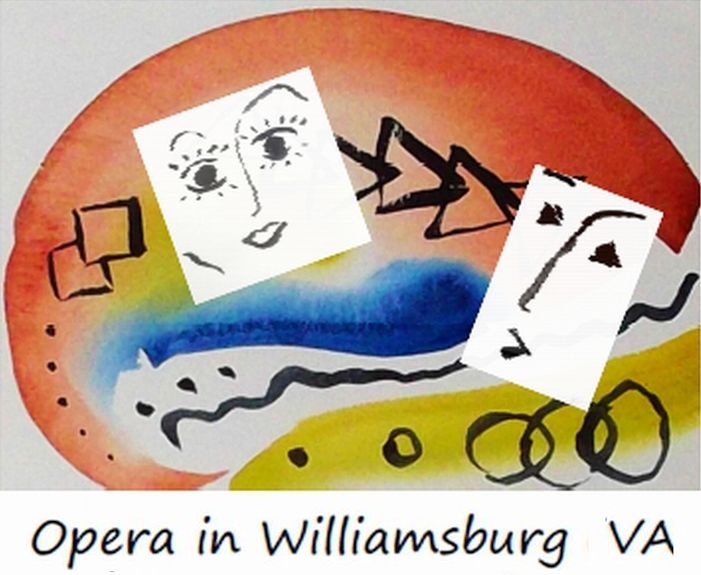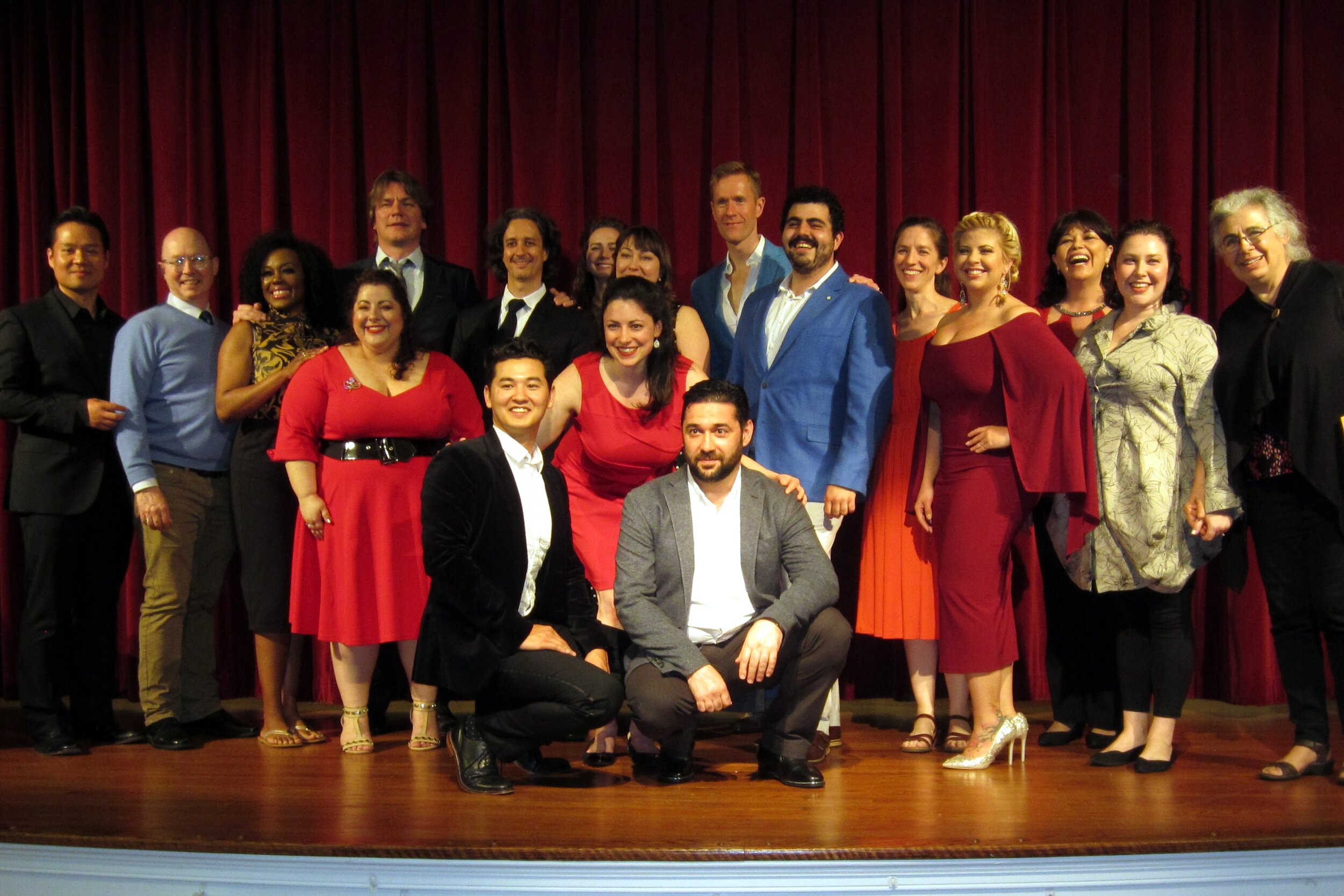(A link to the recording of this talk is at the bottom of the page — many thanks!)
Do you love Puccini? He’s certainly one of my favorite composers, and I’m not alone. Puccini is considered by many the height of opera. Certainly of the three most performed composers nowadays (Verdi, Mozart and Puccini) he is the latest, and so his operas could be considered at the top of the evolution of opera. Evolution as the constant change that any art form is subject to, because of the constant search of artists to be more expressive, more interesting, more appealing.
Since we are talking about this continuum in time, let me talk really briefly about the history of opera. Opera as an art form has the particularity that we know which one was the first one, which is something that can be said for rarely any art. La Dafne by Jacobo Peri was performed in 1598 in Florence, and it started a series of similar plays that were sung throughout. They were trying the recreate Greek theater (most early operas have classical stories) and they thought that theater in classical Greece was actually sung, so they decided to sing the whole thing. These early operas were like sung recitations, and they sounded closely to what we call now recitative.
Most of the characters were mythological gods and heroes, and then kings and warriors, and eventually their stories were seasoned with comedic characters that were of lower class, like fauns, shepherds, and villagers. These low class character were often given little catchy songs and simple dances, that actually were very successful with the audience. By the end of the 1600s after a hundred years of evolution, these dances and songs took over the heart of the operas, and the recitatives were left to keep the story going in between songs, that by then were already called arias, or melody for a single voice. The arias marked a single moment in the course of a dramatic action. Ensemble singing, from duets to full company choruses were present in operas from the very beginning (since earlier opera composers were great madrigalists), and continued throughout the evolution of the genre, but the arias were always the key moments, for excitement that comes out of the concentration of the dramatic content and the opportunity for technical display of the performers.
This alternation between arias and recitative continued unchanged until Gluck (famous for his Orpheus and Eurídice, a very popular classical subject for opera by the way) tried to smooth the transitions between recits and arias. By the time we get to early 1800s the flow of the score goes pretty much continuously, still with clear endings at the end of large ensembles or show stopping arias. But towards the end of the century composers are trying to get rid of all this start and stop that they considered a distraction to the dramatic flow of their operas. Wagner was very adamant about this concept and most of his operas only stop at intermission and even he often wrote operas without one, like Flying Dutchman and Rheingold.
This take us to Puccini and particularly La Boheme. In this opera he tries to eliminate most of the stops in the run of the music and if you have had the chance of seeing it, you may have noticed that Act II goes totally uninterrupted from the beginning to the end. We still have those extended solo moments in which the characters express their feelings in a not too long monologue, and although there is plenty of vocal display (mostly focused in the very famous ‘high notes’), most of the aria is actually a vehicle for character and relationship development. Contrary to the traditional arias in which time stops, Puccini arias are more often embedded in the time continuum and belong more to the action that to the character. They blend beautifully in the scene which makes the whole experiment more realistic.
Let’s take the example of Benoit monologue. It could easily be considered an aria, albeit short, but the flow of the drama, and the fact that we are focusing in the character in his interaction with the other characters make us not perceive it as an aria. It also lacks of dramatic punctuation, and-like many of Puccini arias in this an other operas after this- the orchestra moves away right into the next thing, without signaling a stop, which further blurs the boundaries of the aria.
We will hear our Benoit, Stefanos Koroneos, singing the landlord monologue.
But before that let’s welcome him again! We are so happy to have you here with us!
What is your history with Boheme, I know you directed it recently. And how is your relationship with Benoit?
You will also play Alcindoro, Musetta’s sugar daddy in the second act. Let me tell our friends that in the original production Benoit and Alcindoro were sung also by the same singer, and it is traditionally done that way. What are the challenges in playing two characters in the same everting?
(Naama: you can hear Stefano’s responses in the recording of the talk, see link at the bottom of the page)
Let’s hear Stefanos singing Benoit scene, in a video recording from Den Nye Opera in Bergen, Norway.
You can see how the action goes on even before he is done with his monologue and abruptly segue into the next dramatic moment.
I talked last week with Suchan Kim, our Marcello, about the fact that Marcello has no so called aria in this opera, even though he is on stage longer than any other character in the opera. But there’s a moment at the top of Act IV in which the attention focus on Marcello, and somehow the time stops and we witness a single moment in the dramatic action, that as I said before, is one of the defining qualities of an aria. This moment is actually part of a lovely duet between Marcello and Rodolfo, in which each character is ‘thinking’ and taking to themselves, which allows the composer to have them sing together.
Act IV starts with these two friends telling each other that they have seen the other person’s girlfriend doing quite well with their new conquests, which send them both to this melancholic recalling of their former feelings. I’m very excited to share with you a video recording of the duet sung by our Marcello (Suchan Kim) and Rodolfo (Kohei Yamamoto) that we put together this past week, and bears all the traits of our stay-at-home production style. I hope you would recognize several of the themes that we heard last week:
Mimi’s
Musetta’
Rodolfo’
Marcello or the friends’
Here is the duet:
Puccini’s arias are masterfully constructed with a clear sense of dramatic structure and emotional growth. As I mentioned last week, he uses the Leitmotif technique. The leitmotif is a recurrent musical theme with clear melodic, rhythmical and harmonic features that are associated with a character, idea or situation. The leitmotif helps establish an emotional connection between the character and the audience, so we become friends of these characters because we become familiar with their music. Of course these themes are beautiful and heartfelt. Mimi’s themes are very recognizable, and there are several in her aria and each of these melodies are totally different from each other yet they go so well together!
We already heard Mimi’s theme in the duet.
Here is the flower and warmth theme, Mimi true musical soul:
Also this happier and playful theme that has no specific definition, but it is very distinct and will appear several times throughout the opera, and each time it will bring us back to the happy old times of their first encounter:
I am delighted to introduce Maria Natale, our Mimi. Welcome, Maria!
(Naama: you can find the discussion with Maria and her singing in the recording of this talk, see the link below)
Continuing with his efforts to facilitate the flow of the drama while providing clear moments for each character to develop and flourish, Puccini and his librettists Illica and Giacosa, instead of making Mimi’s first aria a single moment in time, they make her tell Rodolfo -and us- about herself, so time never stops, and even more, Rodolfo gets to interject in the middle of the aria to further bend the traits of a traditional aria. Also, and especially, the end of the aria is not a typical end with high notes and loud chords, but instead the arias fades out into a recitative with almost no accompaniment.
Let’s hear Maria Natale singing Si Mi chiamano Mimi. I recorded the piano reduction for her, I hope we can hear it well enough, but the important thing is that we hear her gorgeous singing!
I’d like to open now the mic to anyone in the room to ask questions to our guests or about Boheme arias or anything really.
I would like to remind you our our upcoming offerings.
A conversation with our singers: Sunday May 24 at 2:30 PM. With Laura Leon, Pavel Suliandziga, Stefanos Koroneos and more.
And talk about the music of The Elixir of Love by my other favorite composer, Gaetano Donizetti. With guests Pavel Sulyandziga, our Nemorino, and April Martin, our Adina. It will happen in exactly two week, Wednesday June 3 at 2 PM
Thank you everyone!
Jorge Parodi
Music Director, Manhattan School of Music Senior Opera Theater
Music Director, Opera in Williamsburg (VA)

